- Home
- >
- Preservation Archaeology Blog
- >
- Robinson Collection Project Update—A Successful ...
Jaye S. Smith and Sheri Thompson, Robinson Collection Project Volunteer Co-Team Leads
(May 10, 2019)—For more than 30 citizen-scientist volunteers, the “end of the season” for the Robinson Collection Project is both exhilarating and frustrating—the 2018–2019 session can’t be over yet! We accomplished so much, with so much more to come. Alas, although it may be over for now, we are all looking forward to the 2019–2020 season gearing up again in the fall.
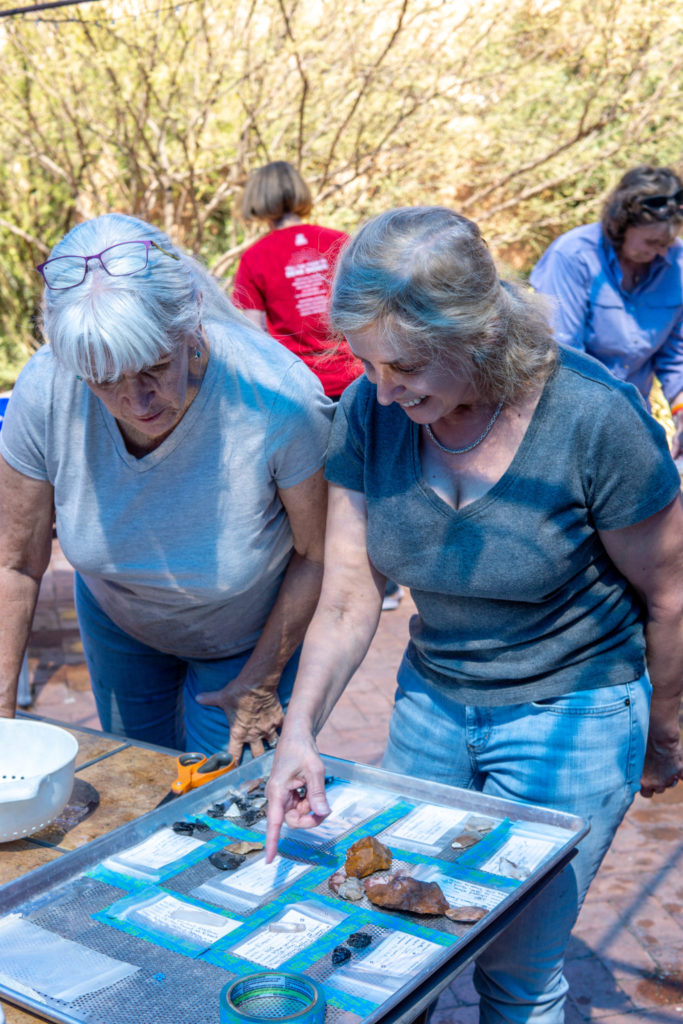
Mary Graham and Valerie Freireich-Kaplan reviewing just-washed objects. Image: Kathleen Bader
The Robinson Collection Project Team focused on two unrecorded sites during this season, the “Cork Site” and “Elmer’s Farm Site,” both located in the Safford Basin in a relatively understudied region. Thanks to Ray Robinson’s notes, which were obtained by our collaborators at Northern Arizona University, Preservation Archaeologist Jeffery Clark has been able to reconstruct reasonable locations for each of these sites and review their relationships to recorded sites in the region. By using Ray’s notes extensively, the context for each of these sites takes on a broader view as we work on the objects that he collected and preserved.
During the 2018–2019 season, we prepared 58 boxes of washed, sorted, and inventoried artifacts from the Robinson collection, focusing on restorable and partially-restorable ceramic vessels. Also included are exciting assemblages of ground stone and flaked stone, as well as faunal and shell artifacts. Each object was treated with the highest level of care and is now ready for the next level of research. The completed boxes have been delivered to the Archaeological Repository at the Arizona State Museum (ASM), and the data created by our team are entered into the Repository’s database for future exploration.
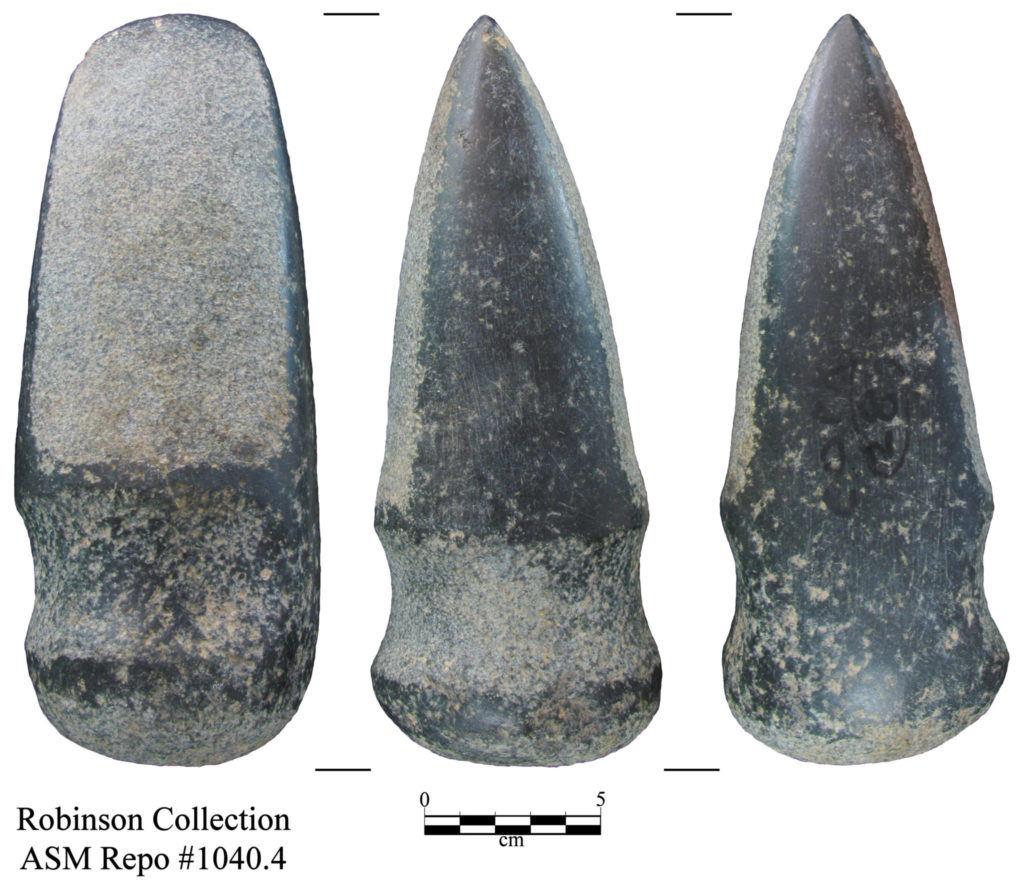
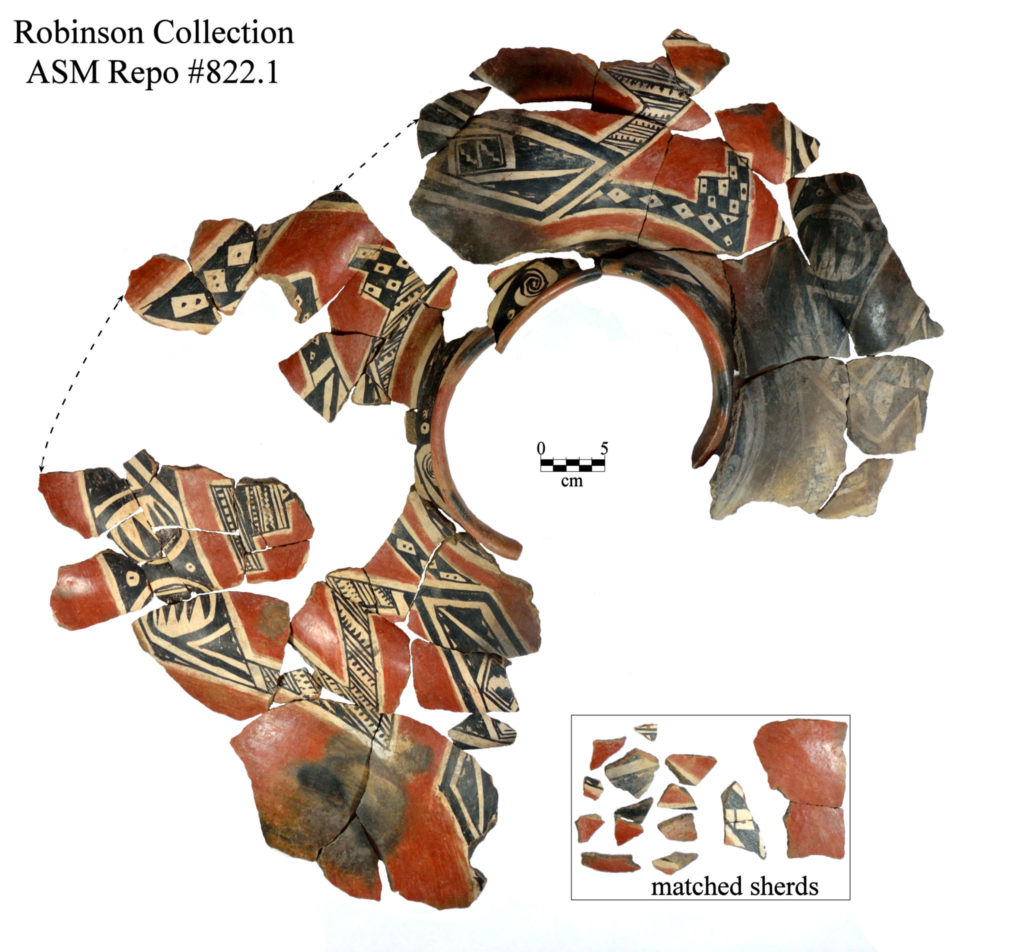
The overall project has benefitted greatly from the professional-grade photography contributed by Lance K. Trask. In the words of Arthur Vokes, lead curator of ASM’s Archaeological Repository, “These are stunning images.” We can’t thank Lance enough for his contributions to the project and his help in the digital recording of the artifacts.
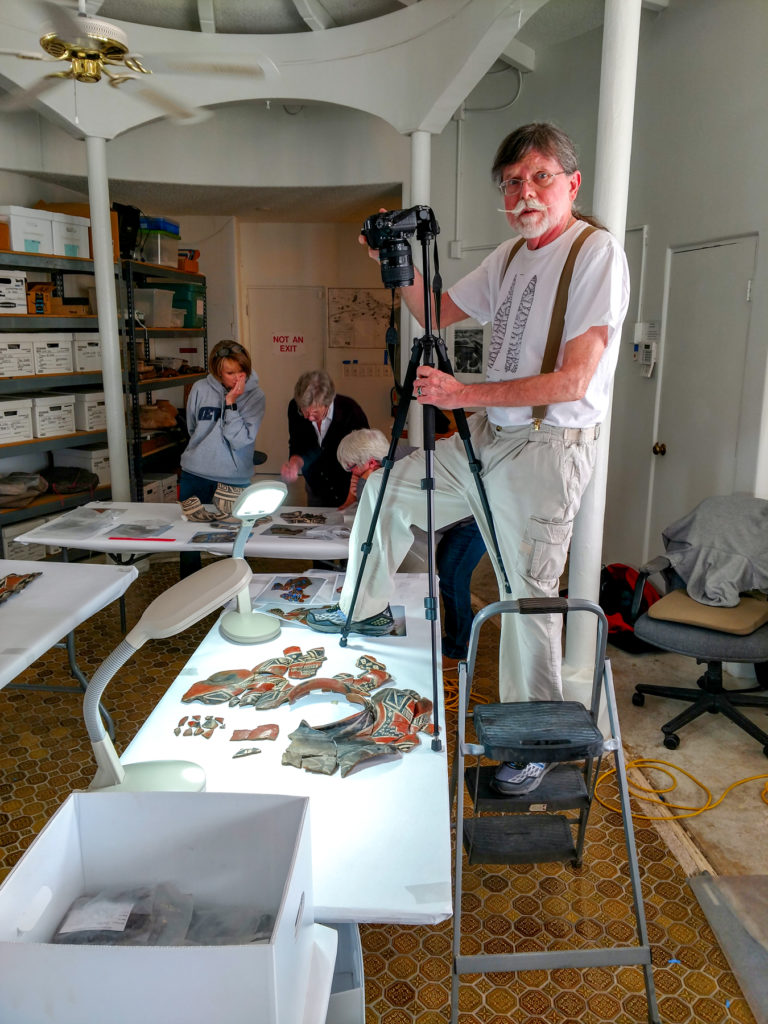
The quantity of obsidian that is included in the artifact assemblage is especially promising. Thanks to M. Steven Shackley and engaged donors, the project was able to undertake XRF sourcing, which ultimately showed that the majority of the obsidian at both the Cork Site and Elmer’s Farm Site came from the surrounding region. Our project team has been invited to present this and other project data at a sponsored session of the Society of American Archaeology Annual Meeting in Austin, Texas, in 2020.
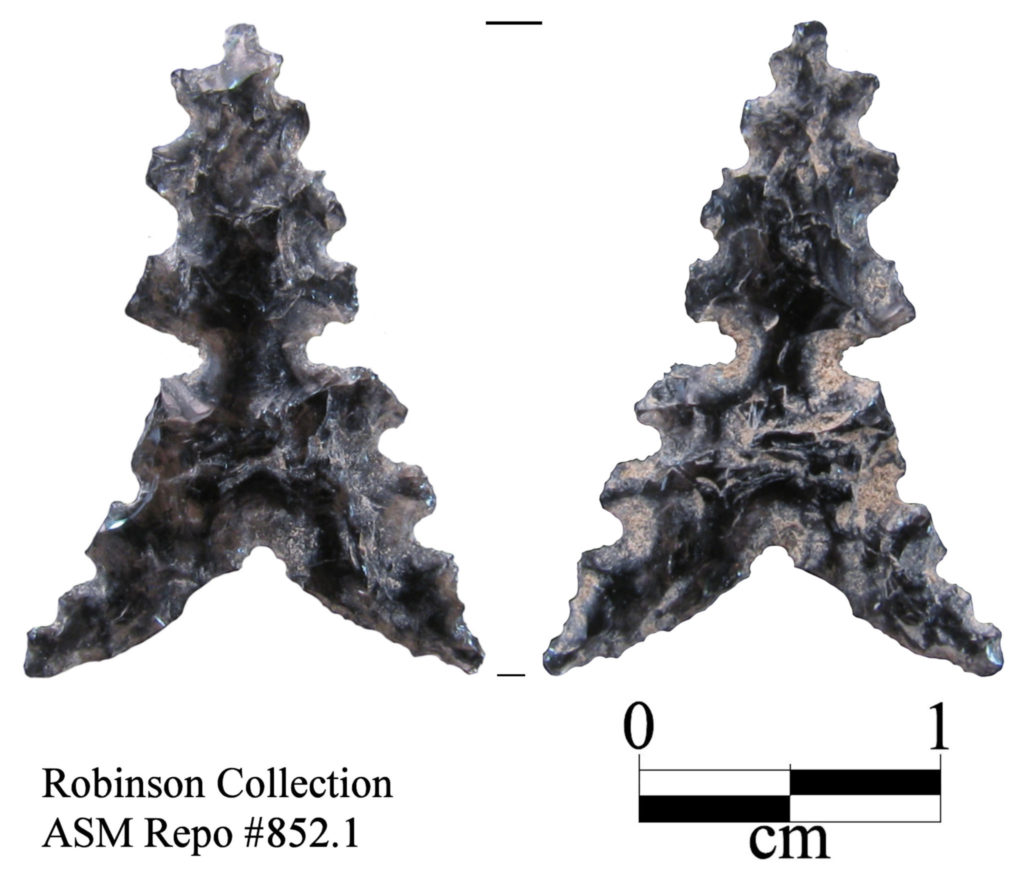
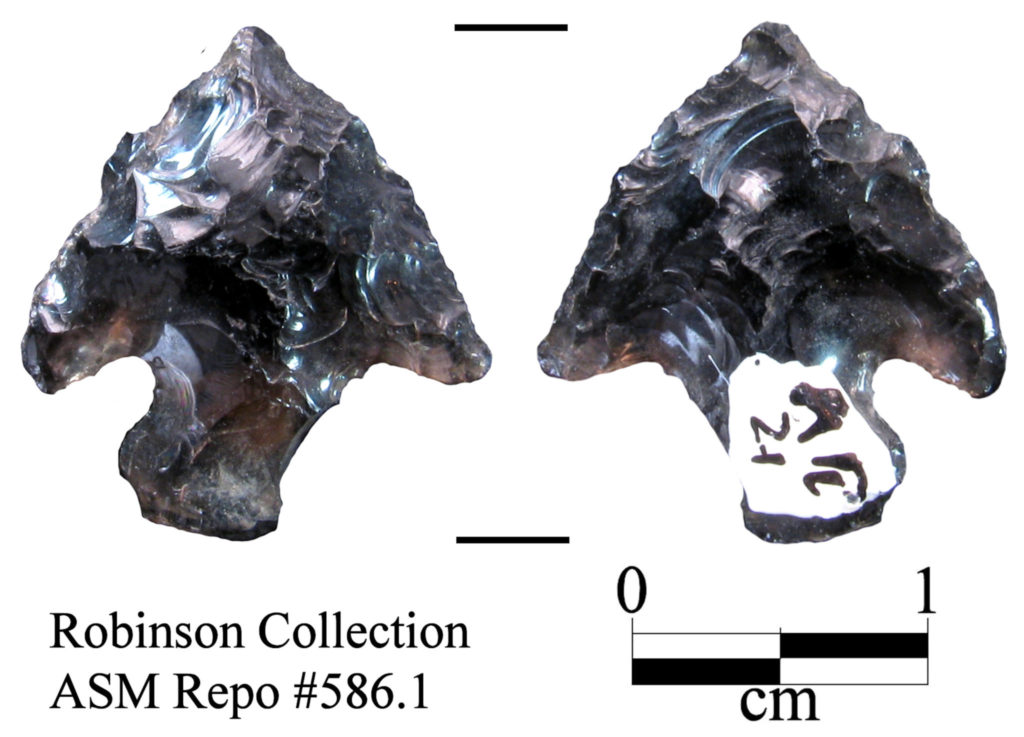
Obsidian Point (sourced to Cow Canyon), Cork Site, Safford Basin. Image: Lance K. Trask
Archaeology Southwest’s dedicated staff has always been available to help our team with artifact analysis and research. During several weekly sessions, the Preservation Archaeologists presented 30-minute workshops on a specific artifact class to broaden the team’s knowledge and understanding of the artifacts being studied and prepared: Jeffery Clark (Salado-related ceramics), Allen Denoyer (ground stone), Leslie Aragon (ceramics and ground stone), Karen Gust Schollmeyer (faunal), and Stacy Ryan (flaked stone) shared their knowledge, advice and expertise with the team throughout the season. Thanks to our team co-leader Chris Lange, of Desert Archaeology, our team members are now much more aware of the importance of shell in archaeological context.
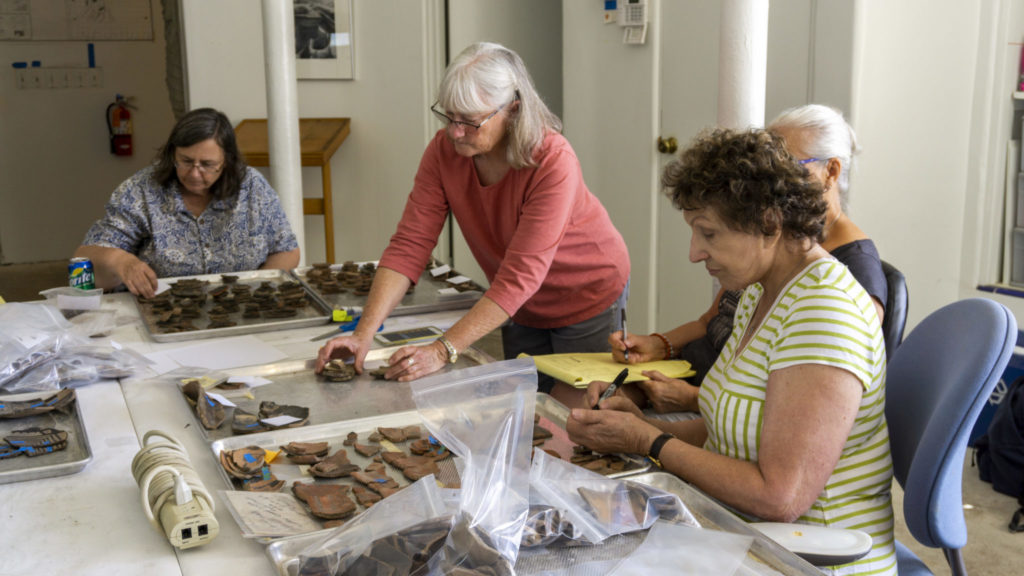
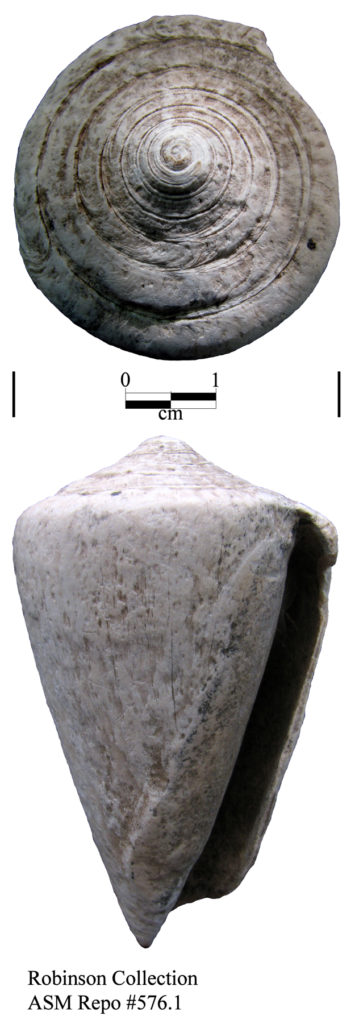
Our “end of the season” gathering was hosted at the Archaeology Southwest offices the end of April, with a special “field trip” to the Conservation Lab at ASM arranged by Linda Pierce. Nancy Odegaard, Gina Watkinson, and their conservation professionals welcomed us warmly and guided us through the next steps in conservation in regard to vessel reconstruction and future preservation.
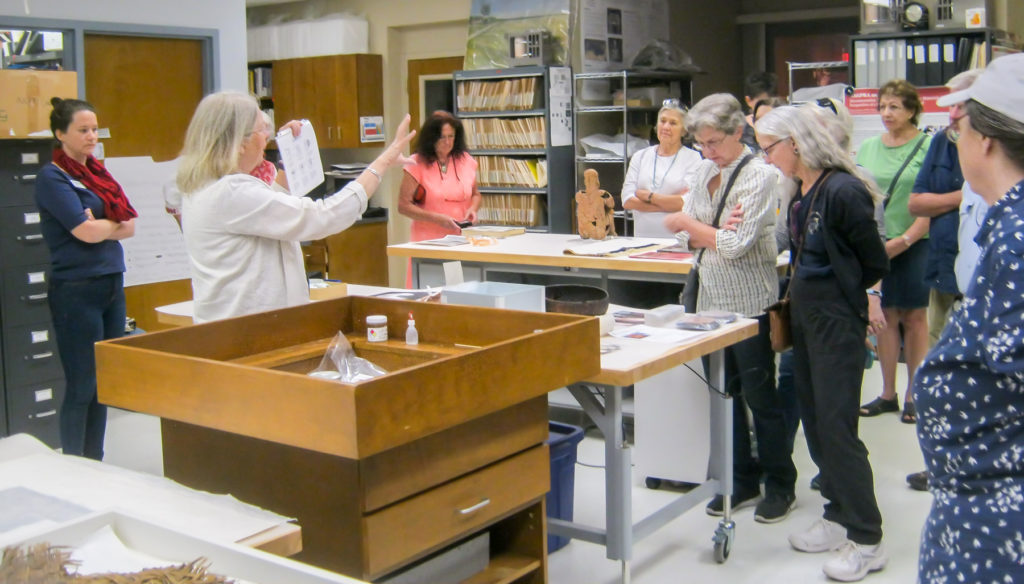
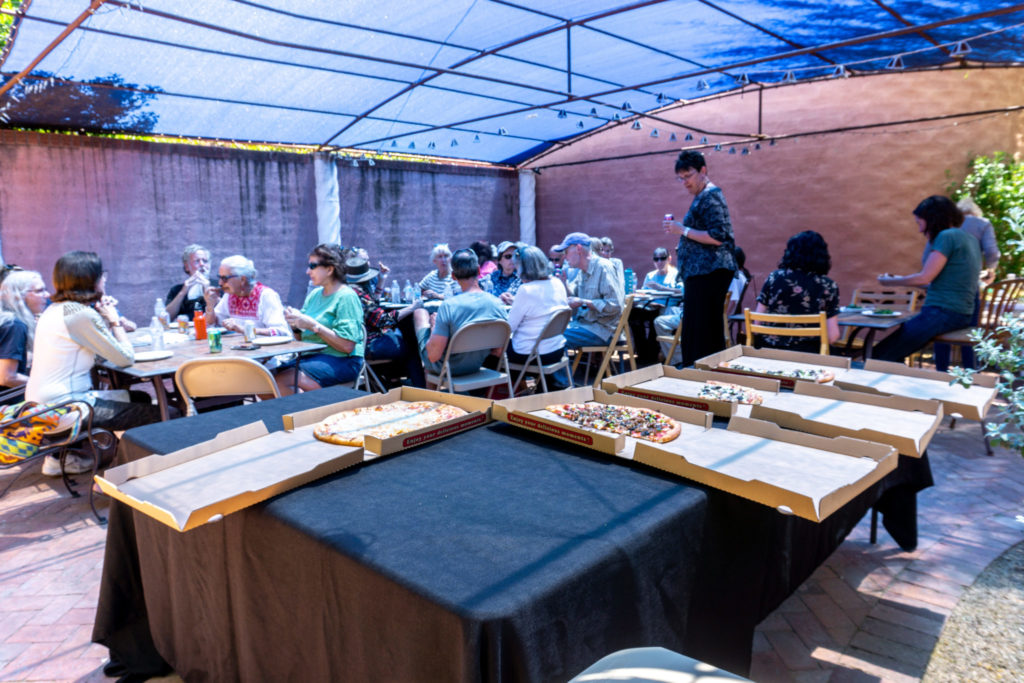
To follow up on the question “So what’s next?” from our May 2018 blog, our season of Citizen Scientist research will resume in September 2019. If you’re a member of Archaeology Southwest and have not participated in the project yet, we encourage you to do so, even if it is just for a few days (spaces are extremely limited). You can read more about the 2019–2020 season and let us know you’re interested here.
The American Southwest Virtual Museum at Northern Arizona University has an online exhibit about the collection.